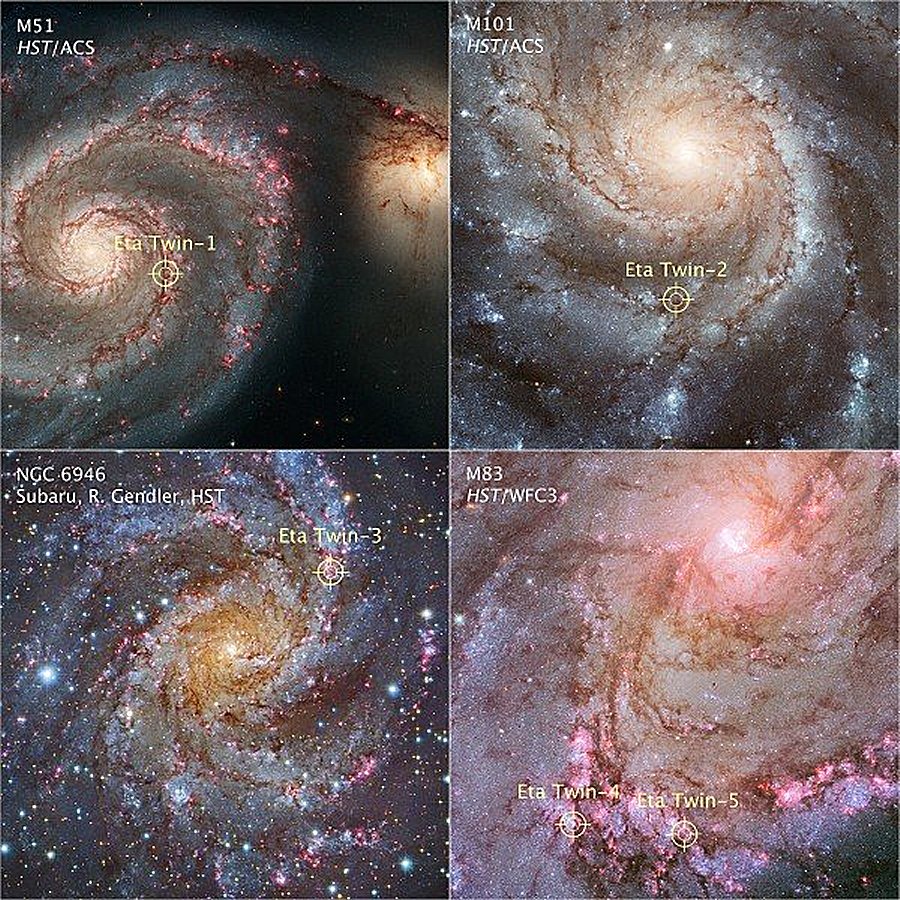MessageToEagle.com – Eta Carinae is the most luminous and massive stellar system within 10,000 light-years.
It is best known for an enormous eruption seen in the mid-19th century that hurled an amount of material at least 10 times the sun’s mass into space. This expanding veil of gas and dust, which still shrouds Eta Carinae, makes it the only object of its kind known in our galaxy.
Now a study using archival data from NASA’s Spitzer and Hubble space telescopes has found five similar objects in other galaxies for the first time.
“The most massive stars are always rare, but they have tremendous impact on the chemical and physical evolution of their host galaxy,” said lead scientist Rubab Khan, a postdoctoral researcher at NASA’s Goddard Space Flight Center in Greenbelt, Maryland.
These stars produce and distribute large amounts of the chemical elements vital to life and eventually explode as supernovae.

Credit: NASA, ESA and R. Khan (GSFC and ORAU)
- Eta Carinae is located about 7,500 light-years away in the southern constellation of Carina:
- Eta Carinae outshines our sun by 5 million times.
- The binary system consists of two massive stars in a tight 5.5-year orbit.
- Astronomers estimate that the more massive star has about 90 times the sun’s mass, while the smaller companion may exceed 30 solar masses.
As one of the nearest laboratories for studying high-mass stars, Eta Carinae has been a unique, important astronomical touchstone since its eruption in the 1840s. To understand why the eruption occurred and how it relates to the evolution of massive stars, astronomers needed additional examples. Catching rare stars during the short-lived aftermath of a major outburst approaches needle-in-a-haystack levels of difficulty, and nothing matching Eta Carinae had been found prior to Khan’s study,’ reports Space Telescope Science Institute (STSci).
“We knew others were out there,” said co-investigator Krzysztof Stanek, a professor of astronomy at Ohio State University in Columbus. “It was really a matter of figuring out what to look for and of being persistent.”
Working with Scott Adams and Christopher Kochanek at Ohio State and George Sonneborn at Goddard, Khan developed a kind of optical and infrared fingerprint for identifying possible Eta Carinae twins, or “Eta twins” for short.
Dust forms in gas ejected by a massive star. This dust dims the star’s ultraviolet and visible light, but it absorbs and re-radiates this energy as heat at longer, mid-infrared wavelengths.
“With Spitzer we see a steady increase in brightness starting at around 3 microns and peaking between 8 and 24 microns,” explained Khan.
“By comparing this emission to the dimming we see in Hubble’s optical images, we could determine how much dust was present and compare it to the amount we see around Eta Carinae.”
MessageToEagle.com






